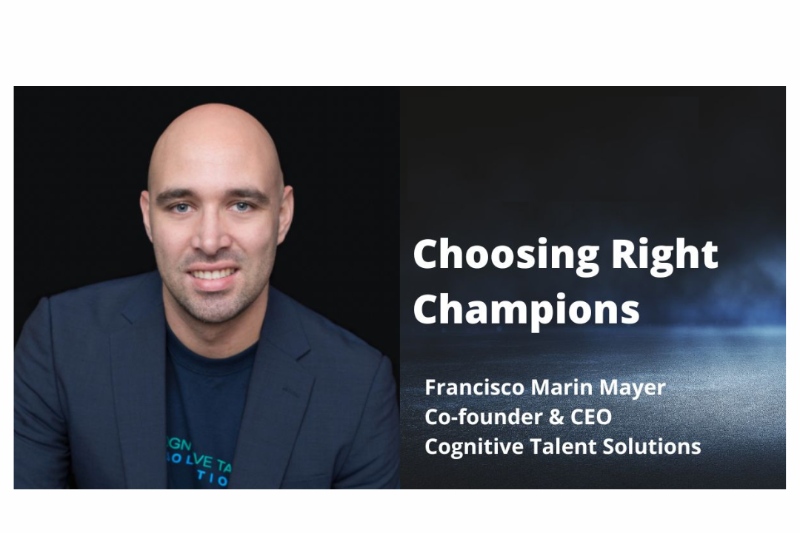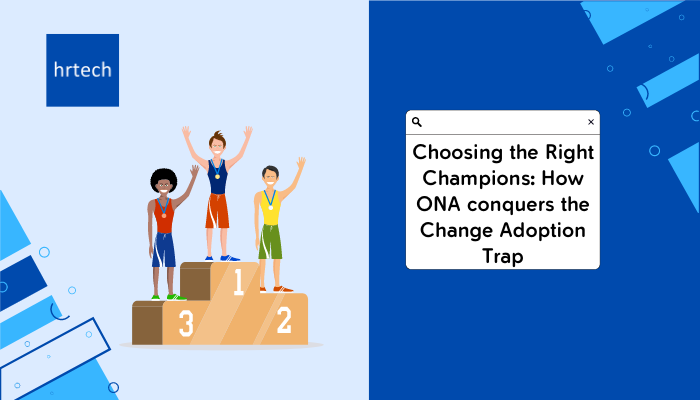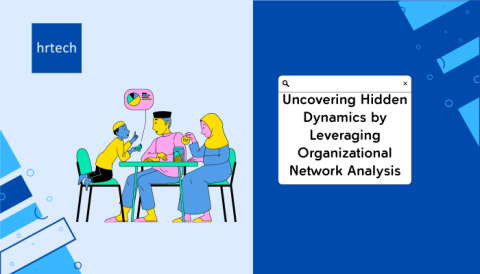The influence of top informal leaders is 40% greater than the average influence of formal leaders. By positioning informal leaders as early adopters of strategic changes, executive teams can mitigate the risks that make up the change adoption trap.

Throughout my professional career, I consider myself fortunate to have experienced change management from within various forms and environments, designations and locations. Each of these experiences provided unique perspectives on how organisations seek to transform themselves, as well as the advantages and disadvantages of the multiple approaches being used.
Yet, no matter where I found myself, each new change management initiative felt like the first, with everyone – myself included – running around in a desperate attempt to make sense of everything that was happening. Like a thousand Bill Murrays in Groundhog Day, it was as if we were all stuck inside a change adoption infinite loop.
Perhaps many of you can relate to the above, particularly those expected to lead their organisation’s transformation to ensure its continued relevance in a world that is substantially more volatile, uncertain and complex than ever before.
According to a Forbes Insights and PMI survey of more than 500 executives, 84% of respondents view CEOs as the ‘Champions of Change’, the driving force behind a culture that supports organisational agility and embraces new technology. C-level technology executives also play a key role in digital transformation success: eight out of 10 respondents credit COOs and CTOs for recognising the importance of the role of change management in disrupting the status quo to stay ahead of the chasing pack.
Nevertheless, even with the strongest executive teams in place, they are still forced to navigate their way through a network of siloed organisational structures which may not be designed to continuously adopt disruptive change. Whether it is a large-scale restructuring effort to drive efficiencies and productivity, a digital platform rollout that disrupts strategic processes or the implementation of agile methodologies that introduce new ways of working, leadership teams often need to address challenges related to strategic change adoption to ensure the success of large-scale change initiatives.
The Change Adoption Trap
A common approach of executive teams when deploying strategic changes consist in relying on formal leadership roles as early adopters, often via a cascade of email communications or through the creation of the so-called “acceleration teams”. In this context, formal leadership refers to both middle management employees and subject matter experts (SMEs), whose interaction with regular staff often constitutes the gravitational centre of large-scale strategic change implementations. While formal leaders are often expected to act as role models in the adoption of these strategic changes, it is worth pointing out three potential risks that can negatively impact their performance as early adopters:
1) Lack of incentive: Disruptive change challenges the status quo, and therefore can be perceived as a potential threat by those holding power within the existing structure. A common example is the implementation of agile methodologies, where managers transition from roles that are intrinsically hierarchical to ones characterised by a stronger coaching and/or mentoring component. Another example is the implementation of a new digital platform (here, think of your Workdays or SAP roll-outs, etc.) where SMEs suddenly realise that their expertise accumulated in legacy tools will no longer be essential for the organisation to run its daily operations. Inevitable, resistance can occur.
2) Lack of ownership: Since all formal leaders are expected to be involved in the process of deploying large-scale change – and with such happening on such a regular basis – they can perceive the assignment as part of their role’s responsibilities rather than a reward for good performance. This way, for a manager or SME who constantly goes through deployments of new digital platforms, being a part of the implementation can seem no different than an administrative task in terms of ownership and motivation.
3) Lack of influence: Driving change adoption requires informal leadership or influence, which cannot be taken for granted in formal leadership roles. While most formal leaders often attain a certain degree of informal leadership during their climb of the corporate ladder, biased decision-making can lead to uninfluential individuals being promoted to formal leadership roles. For those employees, their lack of influence inevitably becomes an obstacle to the successful adoption of an organisation’s strategic change.
This lack of incentive, ownership and influence constitutes the “change adoption trap”, and is a phenomenon which impacts not only any change agents but also formal leaders acting as early change adopters, as the power they already hold disincentivises them to effectively fulfil their responsibility as role models in the implementation of strategic changes.
Figure 1: The Change Adoption Trap. Source: Cognitive Talent Solutions
The Solution: Leveraging Informal Leadership Through Organisational Network Analysis
The question then becomes, how can executive teams mitigate the change adoption trap? The answer lies with ONA.
The integration of social capital in strategic decision-making has been validated as an effective, necessary complement to the traditional change management approach.
Social capital refers to the networks of relationships among employees working in a particular organisation, and who enable that organisation to function effectively. It is often portrayed as a complement of human capital, which in turn refers to the stock of habits, skills and competencies that enable employees to effectively perform their job.
Organisational Network Analysis (ONA) is a powerful approach to assess and leverage social capital in an organisation, which has been highlighted by Deloitte’s Human Capital Trends Report for the third consecutive year. This People Analytics method leverages active and passive data sources to visualise and analyse how employees interact in an organisation, enabling the identification of informal leaders who can be turned into early adopters of strategic changes to accelerate adoption. Active ONA (based on an online survey) is generally more effective than passive ONA (based on digital footprint) for the purpose of identifying informal leaders, since the connection captured in the survey implies a recognition of value. However, the combination of both active and passive ONA is the ideal scenario given the scalability of passive ONA, especially in the context of large initiatives.
Figure 2: Organisational Network Visualisation. Source: Cognitive Talent Solutions
Based on Cognitive Talent Solutions research, the influence of top informal leaders is 40% greater than the average influence of managers. By positioning informal leaders as early adopters of strategic changes, executive teams can mitigate the three risks that make up the change adoption trap:
1) Disrupting change is not perceived as a threat by informal leaders who do not hold a formal leadership role. However, if they are not involved in the change process, they may feel disengaged and use their influence to create resistance against the project. This can cause irreparable harm to strategic change adoption and the root cause may go unnoticed if the company has not identified its informal leaders in a proactive manner.
2) Being appointed as an early adopter is perceived as a reward by informal leaders. Whether the assignment is expected to be fulfilled on top of the informal leaders’ main role or it becomes a new role by itself, it will likely result in an upgrade from their previous responsibilities if they did not hold any formal power. The assignment will therefore be perceived in a positive manner by the informal leader, thus increasing levels of motivation and ownership.
3) Informal leaders are the perfect candidates to become early adopters because they are already doing the job, just not in the way the organisation wants them to do it. Whether consciously or not, informal leaders are already being looked up to by their peers as role models when it comes to adopting or rejecting strategic changes. By officially appointing them as early adopters of such changes, the organisation is both recognising their influence and holding them accountable for it.
Conclusion
In today’s volatile, uncertain and complex reality, C-level executives are increasingly perceived as champions of change and are required to navigate through an intricate network of organisational silos. Executive leadership teams can benefit from an increased awareness of the intrinsic conflict of interest that arises when formal leaders are appointed as early adopters of strategic changes, and by learning new approaches to avoid the change adoption trap that is created as a result.
For more information on how ONA can ensure the success of your change management initiatives, contact us at info@cognitivetalentsolutions.com or visit www.cognitivetalentsolutions.com to learn about the benefits of our proprietary organisational analysis and restructuring platform.
About the author:

Francisco Marin Mayer is the co-founder & CEO of Cognitive Talent Solutions, a leading global Organisational Network Analysis (ONA) provider. Cognitive Talent Solutions has been highlighted among the Global Top 12 vendors shaping the ONA space, being one of the only two providers in the list offering both active and passive ONA capabilities



